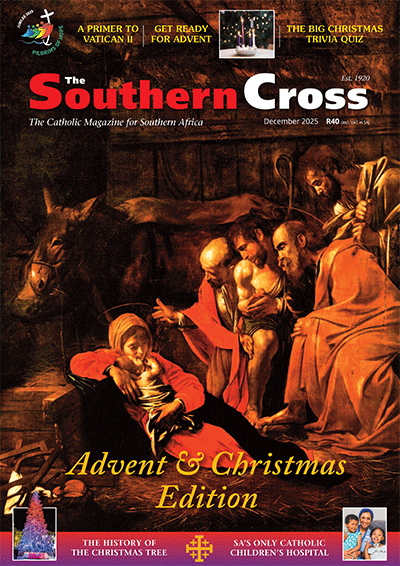Making our voice heard
If one were to form an opinion about the Catholic Church based entirely on its coverage in South Africas mainstream media, one might well conclude that it is a peripheral outfit of reactionary bigots led by anachronists who hate women and are responsible for fostering overpopulation and Aids in Africa while its clergy abuses little children.
Some of these ideas are entertained even among Catholics who faithfully attend Sunday Mass. Readers of The Southern Cross will know that such reductive views do not correspond with reality. Indeed, as consumers of Catholic media they will be equipped to persuasively repudiate such perceptions. The creation of these prejudices is not necessarily part of an orchestrated anti-Catholic campaign though some journalists doubtless do have an agenda but the consequence of a general ignorance about the Church, its structures and its mission.
The medias blind spot on religious matters marginalises and trivialises issues of faith. In South Africa, religion is deemed newsworthy only in sensationalistic terms, with the stories placed in the hands of journalists who often are unfamiliar with the subject they are being asked to cover. Editors often are ignorant of the vibrant and newsworthy debates and activities in the Catholic Church especially. And for this, the Church has to take a big chunk of blame itself. For many years, Catholics have viewed engagement with the media as futile and expendable, not in small part due to having been burnt by instances of malicious or incompetent journalism. Fear, suspicion and resigned reaction have shaped a regrettable laager mentality.
And yet the promotion of a Catholic voice in the media, secular and Catholic, is an essential tool of evangelisation. In the present Year of St Paul, the Church is particularly mindful of the manner in which the apostle went about his mission. He used the media available to him to the best effect: his epistles, sent to fellow Christians far and wide, were the newspaper or blog of his day; his public preaching the equivalent of radio or TV. By communicating his vision, and articulating it for dissemination by others, he reached far beyond a limited Christian audience.
Abbot Franz Pfanner, soon after setting up his community in Mariannhill, bought a printing press to produce Catholic material, including the Zulu newspaper UmAfrica, which still exists. In Abbot Pfanners words, the media represent the second branch of the pulpit.
The Church must make better use of that pulpit. It is encouraging that after many years of neglect, the bishops of Southern Africa are investing thought, energy and resources into the Catholic social communications apostolate. News that the Social Communications Office at the bishops conference will employ two staff members to assist the tireless Fr Chris Townsend must be especially welcomed. But social communications is not only the bishops job. It concerns all Catholics. Every active Catholic who does not know much about his or her Church and faith represents a failure of its social communications ministry.
Not every Catholic has the capacity or time to produce media. But every Catholic, including the overworked parish priest, can contribute to the social communications apostolate by promoting Catholic media: from the pulpit, in the church foyer, by recommending Catholic publications or talking about Catholic radio to their friends.
- The Look of Christ - May 24, 2022
- Putting Down a Sleeping Toddler at Communion? - March 30, 2022
- To See Our Good News - March 23, 2022





